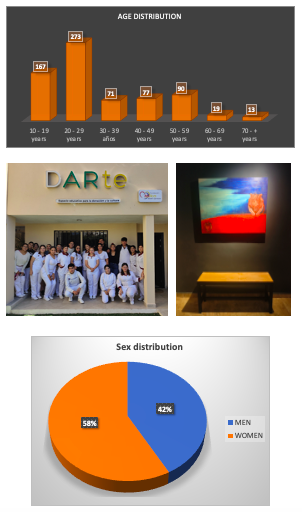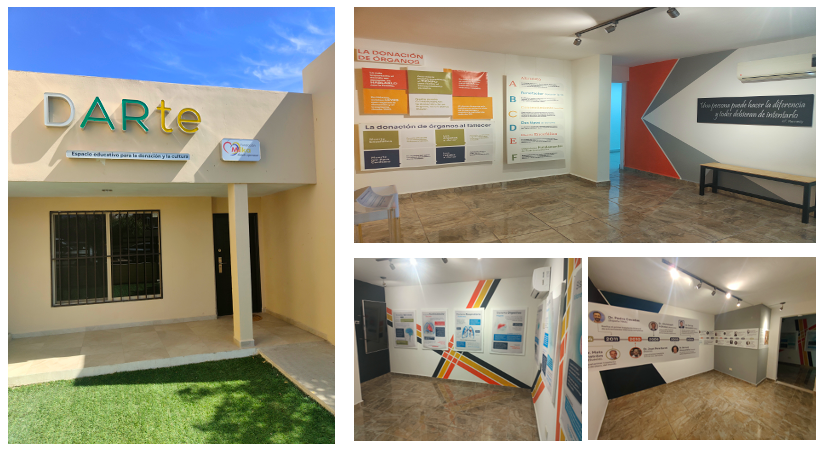Creating new ways to increase organ donation awareness: The first organ donation and transplants museum of the world!
Ernesto Duarte Tagles1,3,4,5,7, Martha S Perez Cornejo2,6,7, Aleika Diaz Garcia4, Andrea Pozos Parra4, Edmundo Armenta Caballero7.
1Transplant department, Hospital CIMA Hermosillo, Hermosillo, , Mexico; 2Organ office coordination, Hospital General del Estado del Estado de Sonora, Hermosillo, , Mexico; 3Surgery department, Hospital General del Estado del Estado de Sonora, Hermosillo, , Mexico; 4School of Medicine, Universidad de Sonora, Hermosillo, , Mexico; 5Surgery department, Hospital San José de Hermosillo, Hermosillo, , Mexico; 6Organ office coordination and Intensive care unit, Hospital General del Estado del Estado de Sonora, Hermosillo, , Mexico; 7Educational office, Fundación MIIKA, Donando Esperanzas, Hermosillo, , Mexico
Introduction: The need for transplants increases every year; however, the rate of deceased donation does not accordingly, with the disparity between demand and supply for organs becoming increasingly evident. While it is true that some countries have achieved reasonable donation rates, most still have a very low one. Albeit a decisive moment to get a donation is during the family interview, all the actions previously undertaken to promote and raise awareness at the population level will never be less important. Among the most used actions to promote a better culture towards organ donation are lectures to diverse audiences and digital media and social networks information; however, despite their usefulness, it is necessary to find new ways of implementing them according to the audience’ needs and features. We developed a new method to inform and educate about organ donation, consisting of a museum type concept, becoming the first of its kind in the world.
Methods: First, a physical space was designed where interactive information about organ donation and transplantation process is shown. Then, a museum type guide tour was established in four exhibition rooms, made up as follows: the human body (room 1), related to brain death and transplantation, the history of transplants in the world and Mexico (room 2), the process of organ donation (room 3), myths and realities of donation (room 3a), the global observatory in organ donation and transplantation (room 3b), tribute to donors (room 4). Once the place was established, agreements for formal and regular visits were signed with educational institutions and companies for students and workers. Before and after the tour, a survey on the level of knowledge about donation and their willingness to become organ donors was conducted.
Results: In 10 months of service, 710 people have attended, 58% were women, 42% men, average age 29.9 years. Fifty eight percent of them reported having certain knowledge about donation; 93% of visitors commented they had no expectations of what to see and received during the visit. After the tour, total participants who previous commented know about organ donation, said learned more in the visit than they had seen and listen before.
Conclusion: This is an appropriate strategy to raise awareness in favor of organ donation. At the end of the tour, all the visitors expressed to be more convinced about organ donation. Moreover, they commented the way in which the place is organized makes more interactive and understandable the information about organ donation than having only a lecture in an auditorium or in a classroom. Also, 8.3% of the visitors with previous no interest, changed their opinion in favor of organ donation, in 97 % of the visitors their conviction to become organ donors were reinforced and signed up personal card, identifying themselves as donors and 15% asked for become volunteer in the project. We believe this museum type strategy is reproductible and feasible.


Ayuntamiento de Hermosillo. Antonio Astiazarán Gutiérrez. Constructora Anamark. Clínica Swanson. Laboratorio San José. DIF Sonora. DIF Hermosillo. Fuerza y Energía de Hermosillo.